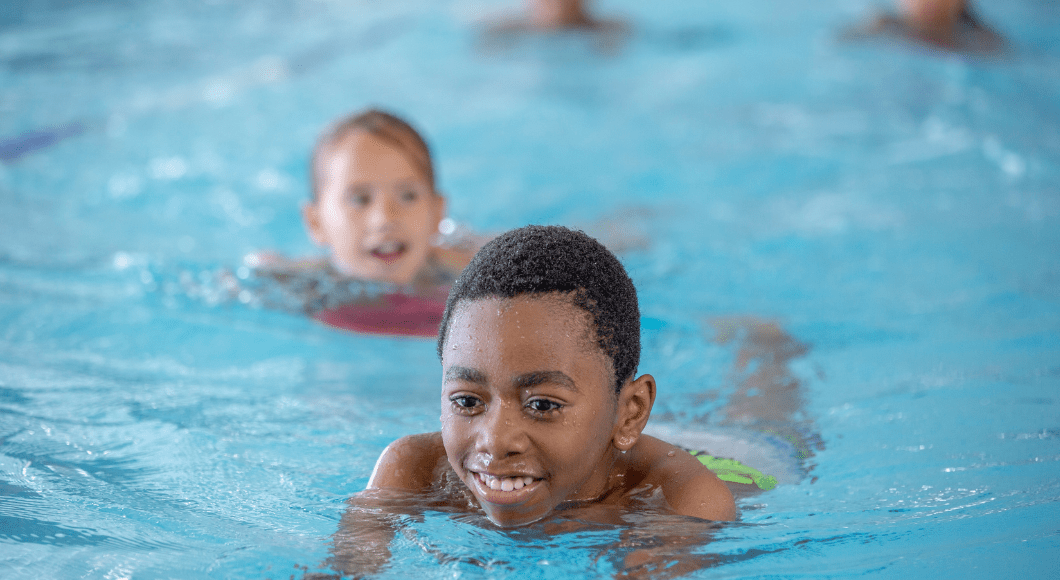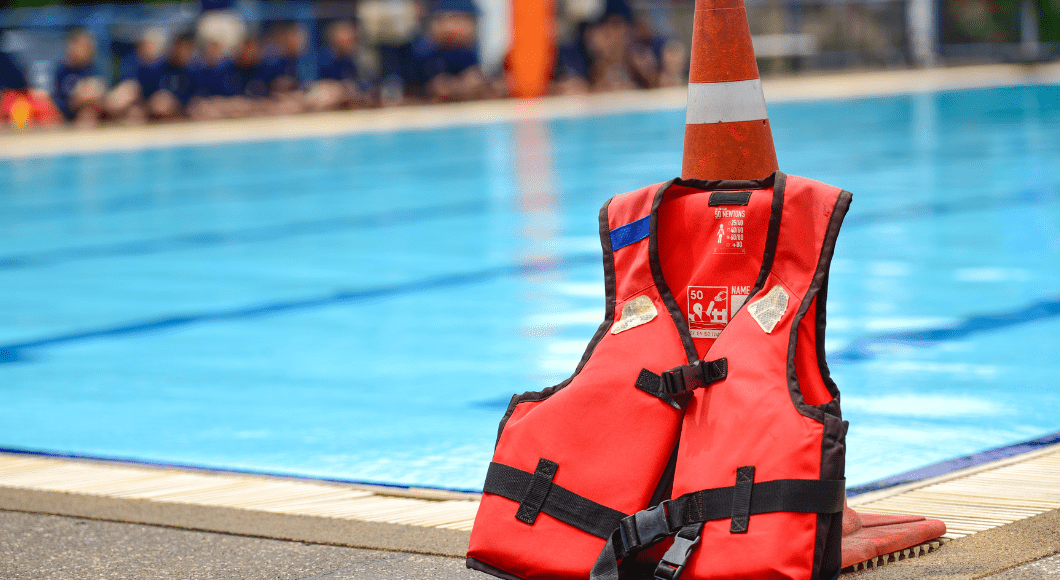Disclaimer :: This article contains sponsored content provided by Children’s Health℠ to share pool safety and drowning prevention strategies.
 In North Texas alone, 64 percent of drownings occurred when an adult was nearby. That number is staggering and one parents need to take note of, especially in summer when most social gatherings seem to take place at a house with a pool, a water park, or a splash pad.
In North Texas alone, 64 percent of drownings occurred when an adult was nearby. That number is staggering and one parents need to take note of, especially in summer when most social gatherings seem to take place at a house with a pool, a water park, or a splash pad.
Collin County Moms wants to help reduce that percentage and asked Children’s Health℠ to help. Children’s Health is a pediatric healthcare provider in Dallas that has been helping children and families for more than 100 years.
Children’s Health cares deeply about pool safety and drowning prevention and offered these helpful tips for parents to remember. Ask yourself the following true-or-false questions to see how well you know your pool safety knowledge.
True or False :: Drownings are the leading cause of death in kids ages zero to four.
TRUE. According to the Centers for Disease Control, more kids ages zero to four die from drowning than any other cause of death with most happening in swimming pools. For children ages five to 14, drowning is the second leading cause of death behind motor vehicle crashes.
These numbers are a somber reality that parents and adults need to take active supervision at the pool seriously. Enroll kids in swim lessons, talk to them about pool and water rules, and stay within arm’s reach of non-swimmers, new swimmers, and weak swimmers.
True or False :: Drowning is most often silent.
TRUE. Unlike in the movies or television shows, there’s no splashing or yelling out for help. Drowning involves a person silently attempting to gasp for air and trying to keep his or her head above water. It’s silent. It’s quick.
That is why it is so crucial for an adult to keep constant eyes on children when they are in or near water. Simply listening for “help” will not suffice.
>> RELATED READ :: Tips from Children’s Health for Summer Pool Safety <<
True or False :: The more adults around the pool, the safer the situation.
FALSE. In theory, it seems the more people poolside, the more likely someone will spot someone drowning. But in reality, more people equals more distractions.
Take a family reunion that happens at a house with pool, for example: There are several adults socializing — possibly drinking — while the kids are in the pool. Often the adults are making eye contact with each other and looking at their phones. They are not looking for signs of drowning or distress from kids in the water.
Instead, designate a “water watcher.” That person will dutifully watch the kids swim for a duration of time (no longer than 15 minutes to keep fresh eyes), then pass the responsibility off to another adult. It’s common for the water watcher to wear a bracelet or some other accessory as a reminder to keep an eye on the pool.
True or False :: Drownings are always fatal.
FALSE. There are fatal drownings and non-fatal drownings. Non-fatal drownings can be serious, despite not taking the child’s life. Some drowning victims survive and do well, while others have a hard time recovering and suffer from brain damage — from lack of oxygen — and other long-term disabilities.
 True or False :: Water wings and other flotation devices prevent drowning.
True or False :: Water wings and other flotation devices prevent drowning.
FALSE. It’s easy to slide on a pair of water wings or toss an inflatable ring into the pool and think your kiddo will be fine. But those water flotation devices are not intended to save lives, not to act as a drowning prevention device. Since they are not U.S. Coast Guard-approved life jackets, they are merely there to aid a child in learning to swim — or just have fun, in the case of an inflatable raft, ring, or toy.
True or False :: Just an inch of water is dangerous to infants, toddlers, and young children.
TRUE. Young children, like infants and toddlers, may have a hard time lifting their head out of water, so even an inch of water can be deadly. Children should not be left alone even in a shallow kiddie pool for the same reason you don’t leave them unattended in a bathtub.
Perhaps the child gets his or her head stuck under a flotation device or bumps his or her head and becomes disoriented. The takeaway: Always supervise kids in water, no matter how shallow or deep the water level.
>> RELATED READ :: My Pool Safety Checklist <<
True or False :: Hotel pools are usually safer than personal pools because they are shallower.
FALSE. Deep pools may seem scarier compared to shallow hotel pools. But pools that aren’t as deep or large pose a high risk of injury in their own sense. They don’t provide swimmers with enough room to safely jump or dive without hitting the edges or the bottom of the pool.
Diving injuries can cause life-threatening spinal cord injuries. Before diving into a pool, take these precautions:
- Dive only into the deep end with your hands in front of you.
- Don’t dive from the side of the pool.
- Don’t dive or jump off a roof or building.
- Don’t dive through toys.
- Make sure the minimum depth is eight feet.
- Never dive into an above-ground pool.
Understanding the truths about pool safety and learning drowning prevention strategies will keep your child and his or her friends safe around water. Pool safety is a serious topic that must be revisited every year for adults to stay fresh and on high alert.
 Children’s Health has been making life better for children in North Texas for more than 100 years. It takes great pride in serving as one of the largest and most prestigious pediatric health care providers in the country and as the leading pediatric health system in North Texas. Through its academic affiliation with UT Southwestern, it is the leader in life-changing treatments, innovative technology, and ground-breaking research. Children’s Health is consistently recognized among the top children’s hospitals in the country by U.S. News & World Report.
Children’s Health has been making life better for children in North Texas for more than 100 years. It takes great pride in serving as one of the largest and most prestigious pediatric health care providers in the country and as the leading pediatric health system in North Texas. Through its academic affiliation with UT Southwestern, it is the leader in life-changing treatments, innovative technology, and ground-breaking research. Children’s Health is consistently recognized among the top children’s hospitals in the country by U.S. News & World Report.
The primary care clinics at Children’s Health provide a medical home for your child when they are both sick and well. It cares for all aspects of your child and his/her health care needs, from well child exams and treatment of common illnesses like cold and flu, to treatment of chronic conditions such as asthma.
Children’s Health has several helpful articles published on Collin County Moms, so take a read!













